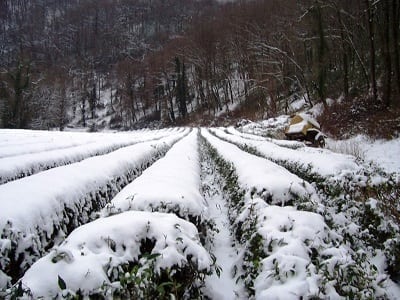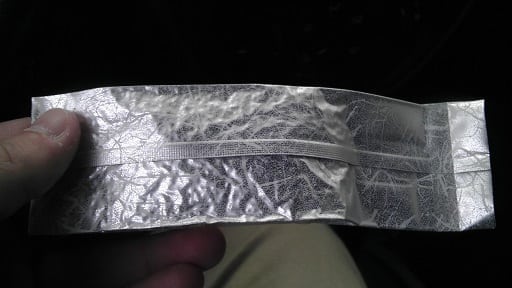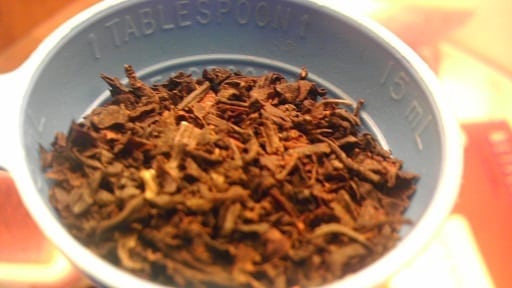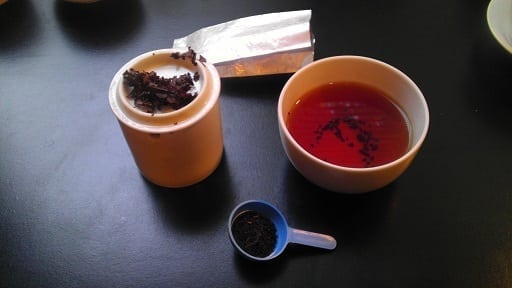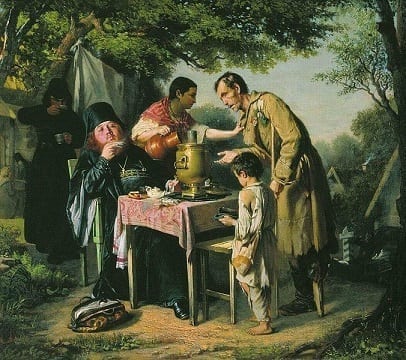I have always had a fascination with Japan for as long as I can remember. The first seeds of wonder were planted by early-80s dubbings of Robotech, and continued on well into my teens and twenties with samurai films galore. One could even say my otaku (read: fanboy) brain was hardwired to like everything Japanese from the get-go. So, why did it take me so darn long to like Japanese teas?
The first sencha I ever tried was from a coffee shop in San Francisco. This was early on in my tea exploration – 2005-ish – and I was just getting used to the different regions. I had no idea where sencha came from, or where it fit in the green tea hierarchy. My cousin suggested it, and I bought a 12oz. cup. And I hated it. Every spinachy sip of it.

It wasn’t until years later that I learned the asshats at said coffee shop had used boiling water, and that sencha required the lightest possible heat setting – like “white tea” light, no more than 160F. Unfortunately, that experience turned me off of sencha for a period of years.
Then I met Ms. Gyokuro.
Talk about life-changing. It was like watching Robotech in my mouth. An epically different experience than I’d had with other green teas. Of course, I also learned that it was considered the green tea from Japan. Highest grade and all. But then I met her wilder sister, Tamaryokucha.
Hard to describe tamaryokucha, but I’ll try. It’s like someone took all the rules to sencha, and threw them out the window. The type didn’t just convince me that I could actually like sencha, but actually opened me up to exploring more. Through that, I encountered many of the weird experiments being done with tea by the Japanese. And I’m all about the experiments.

Okay…maybe not all the experiments.
After going down the windy, surreal road that is Japanese tea, there was one thing that always irked me. Why were all Japanese teas green? No blacks, oolongs, whites, or anything else; just different shades of green. Granted, I liked a good percentage of the tea-speriments out there, but where were the others?
It wasn’t until I encountered my first Japanese black tea that I learned why. Japan had tried making a go of black tea production roughly two hundred years ago, but they could never produce at the same level (or at the same cost) as neighboring competitors like Sri Lanka (Ceylon). Plus, the quality of the product was not as up to par. I can attest to that. Of the three-ish Japanese kocha (black tea) I sampled, I liked about half.
Somewhere down the line, though, I learned of the existence of hand-crafted Japanese oolongs. Not sure when I ran into it or how, but that instantly grabbed my attention. That in turn led me to contacting an outfit called Yunomi.us.
I knew of (and talked to) Ian Chun of Matcha Latte Media before. His du-“tea” prior to Yunomi.us was setting up online stores for various Japanese tea farmers. Yunomi.us was a bit of a different beast because it was modeled as a collective marketplace for Japanese teas and teaware. Instead of independently-run, un-connected sites, different tea farms were listed under one umbrella. Similar to Tealet but focusing exclusively on Japanese wares (or so I surmised).
Yumoni.us graciously sent me three Japanese oolongs to try. Two from the Kaneban Higuchi Tea Factory in Asamiya, Shiga Prefecture…and one from the Takeo tea farming family.

Unfortunately, I didn’t get to brewing them until six months after receiving them. Not sure why I waited so long, especially given the results.
Higuchi #1: Blue Oolong Tea
The leaves looked and smelled like no oolong I’d ever seen. The cut was similar to a curly-style sencha, but with flakier, leafy bits. And the color palette was like a Japanese kocha. The aroma was even more bizarre – something like mint and sweet rice.
Brewing instructions on the site recommended 90C water (190-ish F, roughly) and a five-minute steep. I used 1 teaspoon of leaves in a gaiwan, and did just that. Five minutes seemed like a long time, but…might as well try it there way first, I thought.

The liquor brewed up to a beautiful brass-to-dark-amber color with an aroma that was both dry and sweet. On taste, several things were at play. When the liquid first hit the tongue, a nutty and tingling sensation occurred. Never had that happen before. In the middle, there was a tad bit of roastiness but not much. A mineral lean as well toward the top note, typical of an oolong. By the finish, it rested on its laurels with a mild but welcoming astringency. As if to remind me, Yes, this is still tea.
Only on the aftertaste did it remind me a tad of other Japanese teas I’d tried. It even lasted a good, medium bodied second steep.
Higuchi #2: Black Oolong Tea
The leaves looked exactly like the Higuchi Blue Oolong, but the smell was quite a different experience entirely. There were hints of brown rice and unfiltered sake – sweet, nutty, a little woodsy and a hint of vanilla. In short, I had no idea what I was dealing with.
I brewed this up the same way I did the Blue Oolong. One would think that something with a “black” label would brew up darker. Not the case here. The liquor for this oolong was a shade or two lighter than its blue sibling. But that may have been my brewing technique…or lack thereof.

The area where this tea differed was…everywhere else. The aroma was malty, along with the requisite nuttiness I found in the Blue. Taste-wise, astringency was the first thing to crop up, followed by a strange mélange of almonds, roastiness, malt, and an odd feeling like I was tasting green tea. This was closer to a Japanese black tea than an oolong, but it definitely pulled back before going all “kocha” on me. Still a very pleasant cup.
A second steep at a shorter steep time produced a crisper brew.
Takeo Family Organic Oolong Tea
This was different than the Higuchi stuff by sheer sight alone. The leaves were longer, curlier, and their aroma – while still nutty in that Japanese way – had a little more going on. The fragrance was – oddly enough – like a Dong Ding. To me, anyway. I wondered if these were hand-rolled as opposed to machine cut.
Brewing instructions for this oolong differed considerably. The tea profile recommended a steep of two minutes in 176F-ish water. An approach more in line with a pan-fired green tea.

The liquor infused to a vibrant copper. The aroma resembled a straight OP, slightly astringent but full-bodied, like an autumnal Darjeeling. As for taste – oh my word, the taste! – it was an oolong in all the best possible ways. Sure, there were some aspects of it that were truly Japanese. (You can definitely taste the region.) I want to say there was a hint of muscatel toward the middle. While most of it reminded me of a lowland, medium-roast Taiwanese oolong – at least on introduction – the rest reminded me of a Darjeeling oolong. Spry, ornery, but oddly refined. Definitely my favorite oolong of the bunch.
While the experimentation of semi-oxdized teas is new in Japan. It is my ne’er-do-well opinion that they’re on the right track. Some refinement of artistry is in order, for certain, but the efforts on display speak for themselves. It was a nice change to encounter a Japanese tea that I instantly liked as much as anime.

Of course, that’s probably the old otaku in me talking.
Or would that be o-“cha”-ku?
















